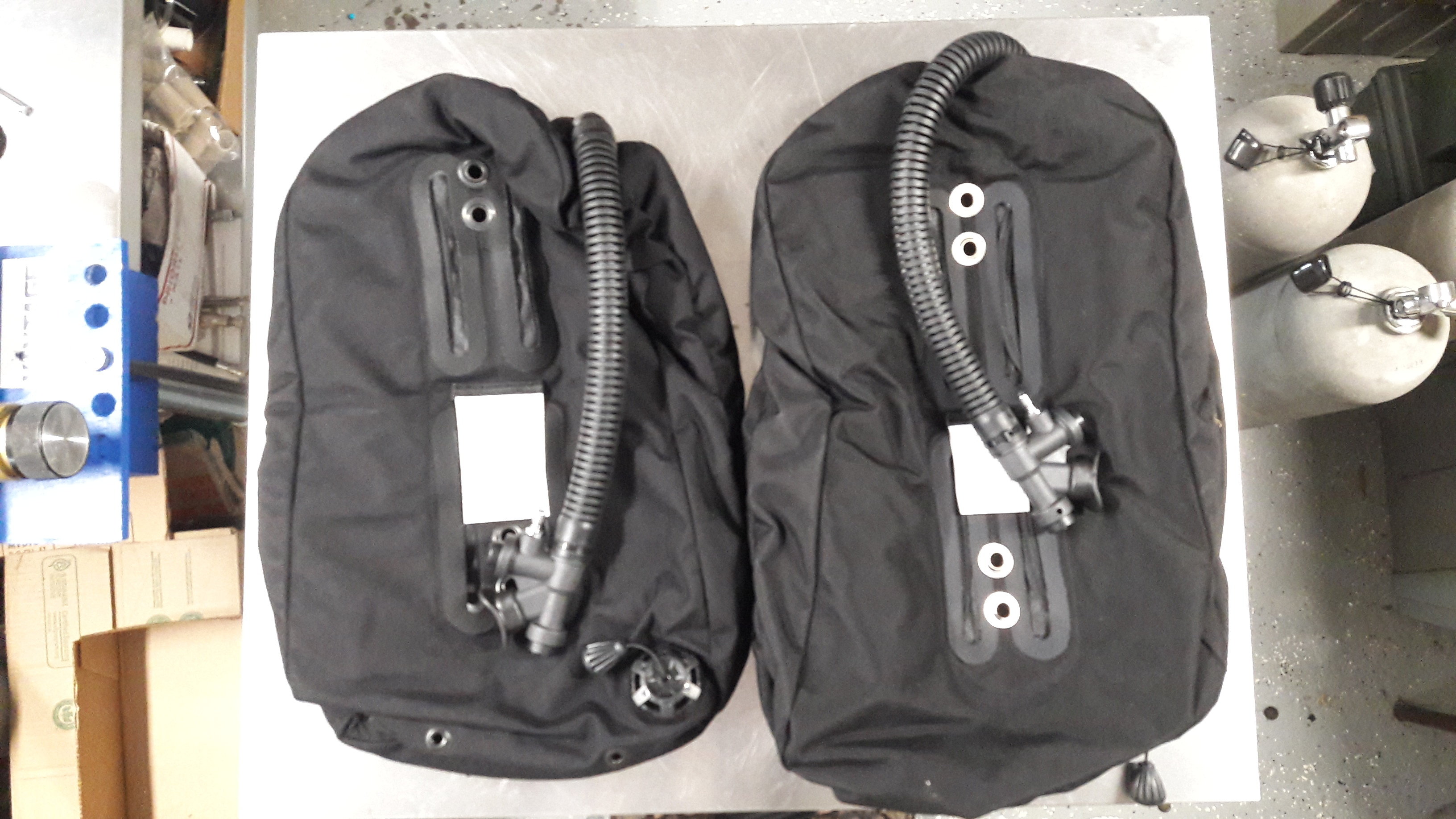The point of a backplate is it's a really simple layout that is pretty much the same regardless of diving singles or doubles.Thanks everyone for your replies. I am still quite confused as to which would be better because it seems the opinions are about evenly split.
As far as I understand it seems that in terms of the necessity for the wing to keep me afloat a 30lb wing would be enough however it might struggle to keep my kit afloat without the buoyancy given by me and my suit, right?
One thing to consider is I prefer integrated weights as I’ve always found that weight belts get in the way and keep coming loose on me, would the fact that all my weight is on the rig change things?
Ditchable weight is something many divers do not use as it implies an uncontrolled ascent to the surface. That might be fine from 20 feet (7m), but it could kill you from deeper. In your case you've mentioned a lot of lead - 10kg/22lbs. From 40m/130ft you'd be like Polaris/Trident/breaching whale.
In my early diving career -- OW, AOW -- I managed to drop the integrated weights out of my BCD on at least two occasions when handing them up to the boat. I finally forgot them, leaving them behind when doing a shore dive and thankfully someone "found" them. Alas I never "found" the "finder", definitely looser's weepers.
If you've any technical diving aspirations, you will not be using ditchable weight.
I've not used ditchable weights since moving to a backplate -- somewhere around dive 50 many years ago. It really isn't an issue and definitely has the advantage that you don't loose the weight as it's on your rig.
I have a smaller 30lb Halcyon Eclipse single tank wing which I've used a few times in warmer conditions. Whilst I only used a couple or three kg (5 to 7 lbs), the wing could easily float everything if I took it off in the water. However, I'd also keep it on when climbing out of the water up a ladder (yes, a ladder, how quaint that they don't have a dive lift!).
Earlier this year I was diving in Lanzarote on my rebreather. I appreciate that it's not a single open circuit cylinder, but it weighs considerably more than your single -- something like 40kg/88lbs. I could easily climb out of the water up the ladder (struth, no dive lift again!) easily hauling both that rig and my carcass up and out. I ain't no Superman Tonto.
When I dived in the UK off a RIB in a steel 12 litre twinset (think that's US size 105?), we had to remove it in the water and the boat people would drag it up and over the sponsons. This required wriggling out of the harness on the surface and using the wing to float it all. For the twinset I would use a 40lb Halcyon Evolve wing, but this rig is a lot heavier in the water than a single (twice as heavy?!?). No problems with floating it.
So I'll go back to my original point. A backplate + one-piece harness + Halcyon Eclipse 30lb wing + single-tank adapter + 3 or 4 weight pouches on the cylinder is really good. There's no need for more weight. Also in warm water you'll soon get used to a lot less lead.





